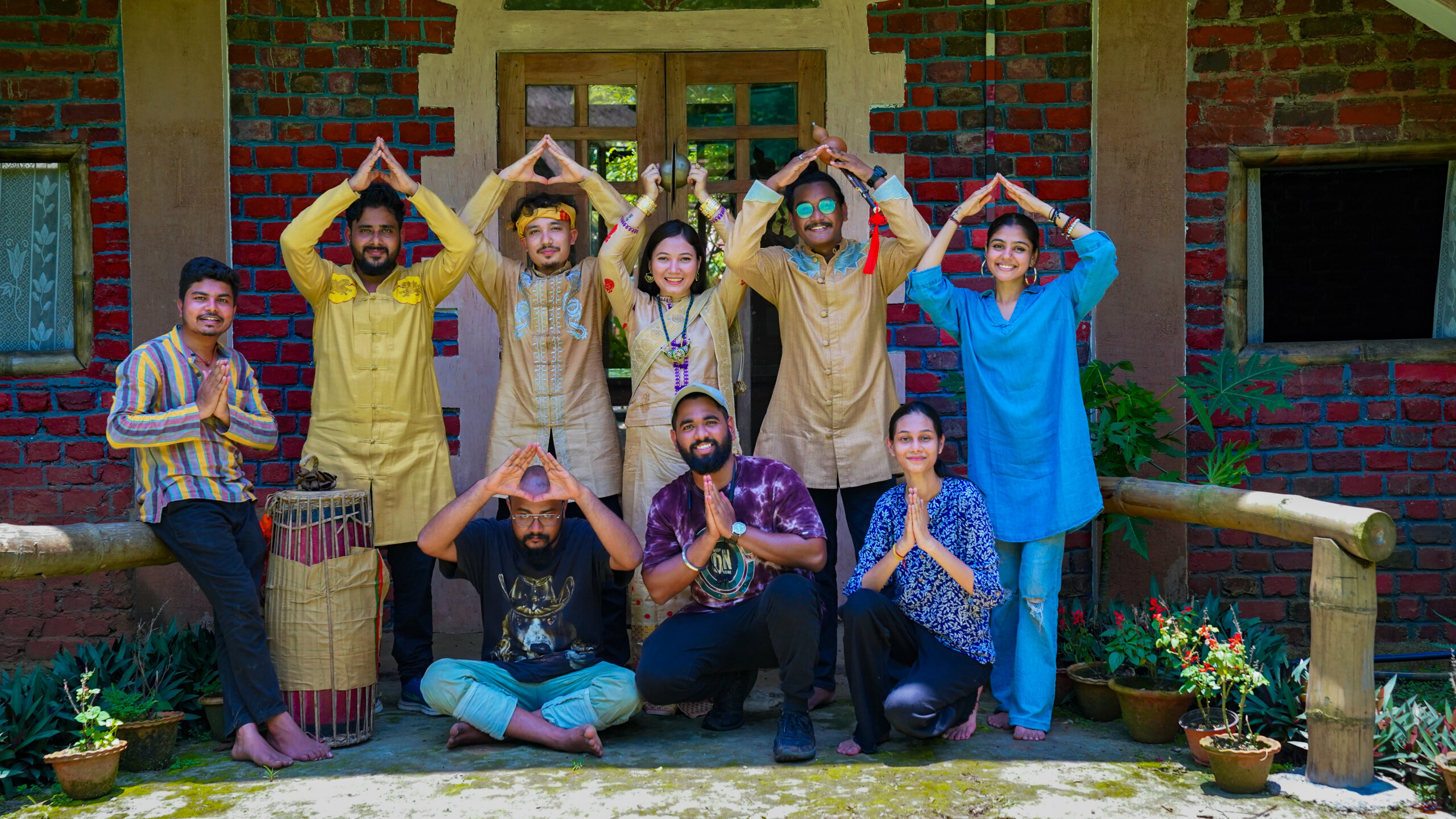
Of Unity, Love & Brotherhood – Tai Ahom
On our first day of documentation in Guwahati, we excitedly met with the talented group Jutimala and the Tai folks, ready to immerse ourselves in their performance. However, nature had a different plan, as the heavens opened up with a torrential downpour, forcing the set-up to be swiftly packed away.
Nevertheless, as our journey in Assam came to a close ten days later, we were fortunate to reconnect with Jutimala and the Tai folks on our last day, giving us a chance to experience their music and complete our documentation with their inspiring artistry. Leading to our time spent exploring the cultural richness of the Tai Ahom community.
Upon our conversation with Jutimala and the team, they shared that The Tai Ahom community of Assam possesses a culture that is on the brink of extinction. Their language, once vibrant and filled with wisdom, now faces the harsh reality of fading away. Sukaphaa, also originally known as Siukapha (Siu-Ka-Pha), was an illustrious figure, the founder of the Ahom kingdom and is considered the architect of Assam. All the Tai Ahom people revere him as the first leader who formed the Ahom community in the northeast region.
Jutimala shared that the Tai Ahom community worships their gods in nature and its elements, engaging in rituals like “Medam me phi ” on January 31st and celebrating the “Banfi” festival throughout the year. Jutimala believes that their language, written script, seasonal festivals, and ancient traditions are at risk of extinction and deserve protection and revival. With a history of 600 years under the rule of a visionary king, the Tai Ahom community has initiated revival efforts to reunite tribes and preserve their cultural heritage. Jyutimala’s advocacy aims to bring attention and respect to the overlooked traditions of the Tai Ahom community.
Listening to the music of Tai Ahom was truly an ethereal experience, with vocals and instruments that could only be described as divine. It felt as though we were transported to a realm where we discovered the inherent beauty of this age-old musical tradition.
Jutimala’s team mesmerized us with their rendition of two ancient songs from the Tai Ahom compilation. Her enchanting voice, accompanied by her talented group members, brought these songs to life.
Their first song, “Lai Lung Kham” was started by prayer as a sign of respect for their forest deity as it goes –
“Chao fura chao tara
Fura tara along sikia rani pan Boi mou
Chao kao oi”
This song expresses that The Tai Ahom community holds a deep reverence for nature and worships the forest deity, “Pu Phi Su.” Their devotional song, “Lai Lung Kham,” is a result of the revival of the Tai Ahom language and culture by Damchao Junaram Changbun Phukan and Manchao Noben Mohan. This captivating composition serves as a prayer to the forest god, expressing the profound belief in the inseparable connection between music and nature. It beautifully captures the essence and origin of music, drawing inspiration from the symphony of the forest itself.
The second song was The Tai Ahom Anthem, “Mo kham phan tai Moung”, which is all about love, unity and peace.
Their first king of Tai Ahom Chaolung Siukapha and his descendants united all the tribes and communities of Northeast India and created Bor Axom. This song is sung as a sign of brotherhood and sisterhood within the Tai Ahom community.
Some parts of the lyrics convey the following –
Rao Jin si hit daini
(We are pacifists.)
Rao Jen pin ou daini
(We are artists. )
Jin si rang Roy Rao mai yam
( Our national flag represents peace. )
Jutimala Buragohain backed both of these songs on the vocals, gong and taal; on the Gong and percussion was Shantanu Gogoi, on the Pin nong Tau (Hulusi), Flute & Khim (string) was Bhaskar Jyoti Konwar, and on the Traditional klong drum was Akash Jyoti Das.
The synergy of their presence of mind, heart, and music created a flawless fusion of melody, harmony, and rhythm. It wasn’t just the music itself that achieved perfect balance; our receptive spirits were fortunate to hear and immerse in the melodies of the Tai Ahom tribe.
As we listen to an artist’s music or have the privilege of meeting them, an overwhelming desire emerges to shower them with good wishes. This sentiment holds true for Jutimala and the Tai folks, whose remarkable work for their art and community deserves nothing less. As you read these words, let us collectively extend our heartfelt wishes to the team, wishing them the best of community culture and creativity.
– Meghal Sharma (Research Fellow)
